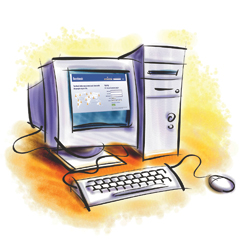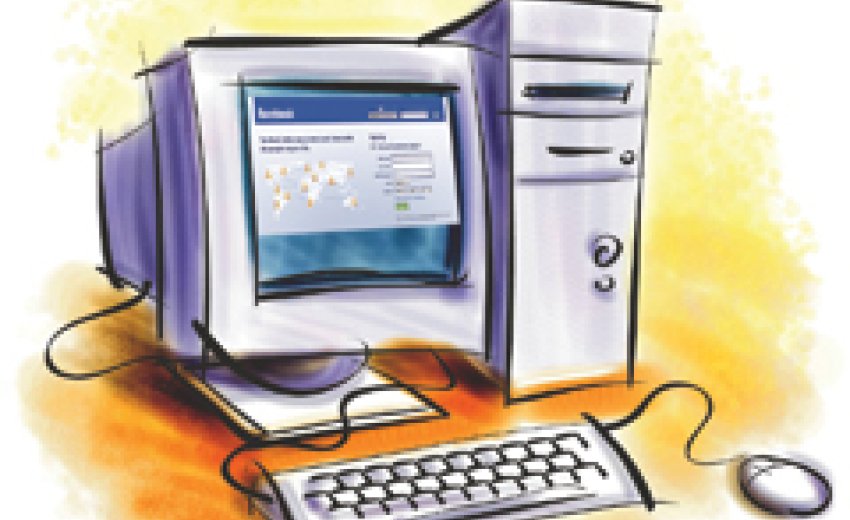
Wednesday, September 21, 2011: Somebody has given the governments of India and Pakistan the strange idea that preventing their citizens from visiting each other and not letting divided families meet will resolve the Kashmir dispute and prevent terrorism. There is no tourist visa between India and Pakistan. Businessmen, artists, journalists, academics and relatives who manage to get visas, applying months in advance and submitting all kinds of documents, are treated like criminals.
The visa wall, preventing much needed people-to-people contact, leads to ludicrous situations. “How’s the weather in Lahore?” an Amritsar resident asked a Lahori businessman who walked across the Wagah border.
“Are you mad?” replied the Lahori. Lahore and Amritsar are only 30 miles apart.
The iron curtain between the two countries has reduced “the other” to a place of the mind, of imagination, hearsay, stereotype and selective history. But while there’s no tourist visa between the two countries in real life, borders are slowly dissolving in the virtual one. We remain citizens of two different countries, Hindustan and Pakistan, but also of the same country, Netistan.
I remember the first time I said hello to a Pakistani online, over ten years ago. “Are you Hindu?” came the response. “Never mind, we can still be friends.”
We have come a long way since then, we Indian and Pakistani netizens. There’s almost no novelty to the encounter. Now we talk more about the weather than politics. “It’s raining in Lahore,” says one tweet. “Please send some rain to Delhi?” replies another.
Netistan isn’t just some candlelight peacenik love-fest where you share jokes. In fact, jingoists are more obsessed with “the other” than anyone else. You see them flaming the comments sections of blog posts and trying to up the ante on twitter (I thought I had seen everything when a warmonger quoted Faiz in his tweet).
What goes largely unnoticed is the huge number of people reading, seeing, talking and listening to each other without exchanging expletives. A silent revolution is taking place as we get to know “the other” by reading each other’s newspapers and blogs, watching YouTube videos and sharing jokes on Twitter. We read each other’s newspaper columns and argue on Facebook but with civility (and often humour). A smooth debate from one newspaper op-ed to another, carried on across the Radcliffe Line through undersea internet cables — who needs a Track II conference?
We now take such interaction so much for granted that we forget how impossible it was before the Internet. The Internet can bring you very close to a place and its contemporary life without physically being there. A girl in Lahore chats all day with a Sikh boy in Hoshiarpur. They hope to meet some day. Children of refugee families see images, maps and videos of their ancestral towns. They make Facebook friends with people from places which were once theirs, or which could have been home but for a quirk of history.
A friend visiting his aunt in Kanpur, realising that she had not met her sister in Karachi for 35 years, got the divided sisters to Skype with each other. The virtual reunion brought tears to their eyes. “You are older than me but you look younger now!” said the one in Karachi.
A young man in Amritsar always thought his grandfather was being delusional in thinking that there would be a whole crowd of his old friends waiting to greet him if he ever got the visa. But today the young man himself has so many Facebook friends in Lahore that he knows he will be greeted by a crowd — if he gets the visa.
The retired Pakistani airforce pilot who sent a condolence email to the daughter of an Indian pilot whose civilian aircraft he had shot down during the 1965 war was able to do so thanks to email. He wanted to set the record straight, to explain that he was doing his job, that the Pakistanis really thought the Indian plane was a reconnaissance mission. He could do so 46 years after the event because his friends were able to obtain the Indian pilot’s daughter’s email address. The daughter’s heartwarming reply also made news, becoming yet another internet-enabled effort in Indo-Pak reconciliation.
It would not be an exaggeration to say that the Internet is today a force behind India-Pakistan peace. Want proof? Want proof? Facebook has a peace website, Peace.Facebook.com, that tracks Facebook interactions in conflict zones. It records the number of “interactions” every day. India-Pakistan interactions were 64,000 on 12 February 2011, peaked to 2.6 lakhs on 30 July and were around 1.5 lakhs on 17 September. They far outdo such interactions between people in Greece-Turkey, Israel-Palestine or Albania-Serbia. The numbers may seem small if you consider that 4.3 million Pakistanis and 28 million Indians are on Facebook, but they are significant given the iron curtain between the two countries.
These numbers aren’t available for Twitter, but because of its open, town-hall character Twitter probably sees far more India-Pakistan interactions. These tend to be more regular yet less intense. I remember replying angrily to Salmaan Taseer’s anti-India tweets and receiving his acerbic responses. Yet I was sad when he was killed. Twitter lets Indians and Pakistanis in onto each other’s internal conversations, and helps us understand each other better.
Coke Studio, started in Karachi by Rohail Hyatt, is broadcast on Pakistani channels that are banned in India — but the episodes are streamed live on various websites. Among others, Coke Studio features 23-year old Amanat Ali from Faisalabad, who debuted as a singer on the Indian show Sa Ra Ga Ma Pa at age 17. He sang Tujhse Naraz Nahi Zindagi so beautifully in the semi-final that since the video has been viewed over three lakh times since it was uploaded on YouTube, with comments from overwhelmed Indian and Pakistanis. It was through YouTube that Coke Studio became a household name in India, and the biggest cultural export of Pakistan to India since the time of Bakra Qishton Pe and Nusrat Fateh Ali Khan VHS tapes.
There is even a Facebook page demanding Coke Studio in India — where the local version is such a spectacular flop and poor imitation, that when it debuted on MTV India, an Indian tweeted to a Pakistani, “Congratulations on the Coke Studio victory!”
Pakistanis are understandably proud of their Coke Studio’s popularity in India, particularly given the dominance of Bollywood films in Pakistan, and even the saas-bahu soaps on Pakistani TV channels.
One of my favourite Netistan stories is about the Pakistani blogger Sana Kazmi and her friends in Karachi who wanted to watch Pakistan play the historic cricket world cup final with India in Mohali. With only five days to go after Pakistan won the semi-final, she started a Twitter hashtag#getthegirlstomohali.
“A sweetheart of a journalist in Delhi agreed to be our pretend-host and quickly scanned and sent us her ID minutes before another very resourceful and exceptionally kind stranger tweeted to say he could get us a booking in a (nice) hotel about two hours from the stadium,” she later wrote. “Another friend in Mohali emailed us a picture of his three VIP passes to the match... We were officially all set with the visa application requirements — thanks to three Indians we had never met!”
No one can deny that Indo-Pak relations are determined as much by strategic impulses as by public opinion in both countries. If surveys are to be believed, this largely remains hostile — 75% Pakistanis and 65% Indians see each other’s countries in a “bad light” (PEW Research Centre poll, June 2011).
It is not just history but also the artificial distance, created largely by the difficulties in obtaining visas, between the people of both countries that breeds such suspicion. As the gap closes on the Internet, this could change. With Internet penetration increasing rapidly in both countries, Indian and Pakistani netizens will break down the visa wall, tweet by tweet. And the forces of hate will sulk in a corner, like a child whose toy gun has been taken away. No one can stop an idea whose time has come.
Shivam Vij is a journalist based in Delhi.

